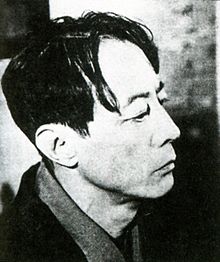Sometimes conversations about changing the world, or at least about interventions that might spark real change, can lead to tangible outcomes with potential powerful, long-range effects. One example of this occurred this past weekend, at the
University of Montana, in
Missoula, at the inaugural
Thinking Its Presence: Race and Creative Writing Conference. Organized by acclaimed poets and critics
Prageeta Sharma and
Joanna Klink, the conference arose out of conversations about institutional racism, aesthetic and critical blind spots, and the necessity for writers and scholars teaching creative writing to convene to hash things out. It also served as a public launch for scholar
Dorothy Wang's superb new monograph,
Thinking Its Presence: Form, Race and Subjectivity in Asian American Poetry (Stanford University Press, 2013), which explores these and other crucial issues specifically in relation to 20th and 21st century Asian American poetics and poets, but also within the larger American literary, aesthetic and cultural fields.
 |
| The opening panel |
The conference, which ran for three days, comprised panel discussions, readings, talks, pedagogical presentations and papers, and a keynote address by Dorothy. Scholars, writers, students, alumni, and staff from the University of Montana, among Montana's president,
Royce Engstrom, and from points all over the US and overseas attended, as did people from throughout the local Missoula creative community. A number of nearby businesses, including
Submittable, the online submission software company that is based in Missoula, served as sponsors, and one restaurant,
Plonk, provided a special discounted menu for the duration of the gathering.
There were many highlights, beginning with the opening panel, which featured University of Montana scholars, among them
David Moore, George Price, Quan-Manh Ha, Benedicte Boisseron, and
Dylan Suagee, each of whom not only gave provocative papers that provided conceptual and thematic frames for the rest of the event. Price, a local historian and lecturer at Montana of Wampanoag, African-American and Euro-American ancestry, opened his talk with a Wampanoag greeting, before posing the question at the center of his paper: "Equally What?" He suggested that historically oppressed people's quest for equality had often been presented and resulted in a push for material, and more specifically, consumerist equality, but pressing questions of social, political and economic
equity, as well as attentiveness to the landscapes around us, still awaited a response from the larger society.
 |
The Naropa-based writers Sarah Richards Graba,
Ellie Swensson, and Amanda Ngoho Reavey |
Equity vs. equality proved a recurrent theme throughout, as did Suagee's point about writing by people of color being a political act always, and his emphasis on the necessity of crossing boundaries to gain knowledge, power and capital to take it back to share with our home communities. This flowed into his discussion of mobile identities and identifications--intersectionalities--and of "communitism," or the merger of community and activism, which he saw his and others' work striving to achieve. One final point that Suagee also broached was that we recognize that "assimilation" was not the goal; as he noted, for many Indians who had gained resources through oil revenues, they were becoming
more Indian, not less. That idea of not sacrificing difference in the face of liberal--and now neoliberal--assimiliationist discourse and policies also reappeared throughout the conference.
 |
| Monica Mody's Skyped participation |
Another key moment was Dorothy's talk, which reprised part of her study's chapter on poet
Mei-mei Berssenbrugge, while ranging more broadly to encompass contemporary criticism about poetries by poets of color. A thread throughout her talk was to disarticulate the concepts of the autobiographical, the universal, the abstract, and the experimental. The questions she fielded were sometimes pointed. One questioner, in an effort to bash "identity politics," a misreading of Dorothy's point about how minority poets, especially ones working in a formally experimental vein and producing work that is not racially marked, wielded what I call the "Hegel" card, which is to say, using European philosophy and critical theory as a trump to make his point, but she was as sharp and spirited in her response, and basically put him and Hegel in their place(s).
 |
| Don Mee Choi |
After Dorothy finished the Q&A, we took a short break, and Sherwin, an acclaimed Diné poet from the Navajo Reservation in White Cone, Arizona, and I read in succession. He presented both new work and poems from his most recent collection,
Flood Song (2009), the former performed almost as though being projected onto an imaginary screen in front of the audience. For my part, I read a new story inspired by a link to minstrelsy sheet music Dorothy had discovered and sent last fall, which led me to look into the life of
Bob Cole (1886-1911), who, I learned, was a major figure in the development of African American vaudeville cultural production. Cole committed suicide while on summer vacation, and my story explored his final hours, weaving in not only snippets of his songs--among which number the still well known "Under the Bamboo Tree," performed by
Judy Garland in her 1949 film
Meet Me In St. Louis, a personal favorite--but also a structural chiasmus in which one song he wrote based on a famous Negro spiritual cross, with a reprise of yet another series of lyrics unfolding in rapid fashion at the end of the story. At any rate, I think it went over very well, and it will be part of a collection,
Counternarratives, which is on its way next year.
 |
Elizabeth Eslami, Michelle Naka Pierce,
Tisa Bryant, Heather Cahoon |
There were
so many excellent panels and readings I'll just mention a few. One was by young writers studying at
Naropa University (Jack Kerouac School of Disembodied Poetics). Chaired by Naropa professor
Michelle Naka Pierce, a superb poet in her own right, the panel featured
Ellie Swensson, Sarah Richards Graba, and
Ngoho Reavey, each of whom explored distinctive aspects of the panel's theme, "Engaging Urgency: Articulation of the Polysemous Self." I have to mention Ellie's neologism "omniantichronology," which she articulated, if I recall correctly, as a way of showing the plasticity of temporality. Themes and practices involving the body, language and multiplicity in terms of form, genre and platform ran through all three of their presentations, with Sarah noting that "to return to the place [where violence occurs] even in your mind creates violence," but she, like Ellie and Ngoho, was interested in the "wound of the return." As Ngoho pointed out, which underlined a number of presentations all weekend long, "English is always a site of translation," and she mentioned the untranslatability of a Tagalog term which a body in relation to all other bodies, which she was looking at in some of her recent work. During this panel, an exchange involving one of the white audience members and Ellie unfolded around white privilege, in which the panel mistook Ellie's mention of privilege as saying that she'd "overcome" it (which the audience member also linked to her own "pain" and burden as a result of that privilege), leading Tisa and I to offer our thoughts, and while the issue was not fully resolved, I felt like there was an open exchange.
 |
| Lillian Yvonne Bertram reading |
Another memorable event was Jess Row's talk, "White Flights," a version of an essay he'd previous published, in which he spoke about the quest among many white American writers of the last 30 or so years for "deracination," which is to say, both "derace" themselves, submerging their racial identity into a normativized universal American (middle-class) subjectivity, but also uprooting themselves from the increasingly racially, ethnically, religiously, and class-diverse urban and suburban spaces of late 20th and early 21st century America. This "white flight" thus has involved not only a flight from racialized others, but from racial identification itself. Among the writers and works he cited as part of his nuanced, enlightening critique were
Marilynne Robinson in her famous novel
Housekeeping,
Anne Beattie's stories, and Pulitzer Prize-winner
Richard Ford and his Frank Bascombe trilogy. Jess noted that since the 1960s, a "decoupling" now linked to an absorption with the landscape depopulated of its original and current peoples, with this liberal abstraction turning into a generalized feeling sublimating racial and social guilt.
 |
| Jess Row |
Among the many ironies Jess pointed out, this sublimation, abstraction and submerging has been frequently--regularly--characterized as "realism," though it is evidently quite different and distinct from the
realism of 19th century European and American literature. In reading Ford and others, he also spoke about the "invisible capital," especially in terms of real estate, to use George Lipsitz's terms, that gets passed on generation after generation by white people, citing the massive loss, in the double digits billions of dollars African Americans have faced by being cut of out the Homestead Act and subsequent legislation, and noted that in over the last four decades we have witnessed a massive "reinvestment in whiteness" in our literature, either by a literary focus on suburbia or exurbia, or on rural settings. There has been an impulse, he stated, "towards erasure and avoidance," with the controversial HBO show
Girls representing a metastatization of this spatial deracination. I.e., Brooklyn with the black and brown people!
 |
Tisa presenting at one of the
pedagogy panels |
Throughout a host of readers presented their work, including featured authors
Kimiko Hahn, Mena Alexander, and
Kathryn Shanley, as well as
Lillian Yvonne Bertram, Tisa,
Heather Cahoon, Teresa Carmody, Don Mee Choi, Biswamit Dwibedy (in electronic form)
, David Micah Greenberg, Farid Matuk, Monica Mody (by Skype),
Tracie Morris, Michelle Naka Pierce, Metta Sama, Aja Sherrard (who was also taking photos throughout)
, Leihua Taitano,
David Witzling, and many more, and the conference concluded with a stellar reading by Montana's very talented and poised MFA students.
1913 Press and
Les Figues were especially visible presences throughout.
One bizarre moment occurred when someone attending a Montana state Republican gathering--was it a state party convention? a caucus?--at the Holiday Inn where the conference was occurring decided to act out, in response to the slogan "Minorities with Grievances" (from Dorothy's book) that graced the conference's beautifully designed (by
Lisa Jarrett) book bags, towards the people at the Thinking Its Presence table. They received a(n unexpected?) firm and polite response and left, though it was clear that the conference participants present were a bit startled by the unprovoked attack. I heard later that officials from the state party convention did apologize for the imbroglio, and as far as I know for the rest of the conference, attendees to both events came and went without incident.
 |
Montana GOP posters all
over the Holiday Inn atrium |
The manageable size of this conference compared to the usual literary ones I attend (like the
Associated Writing Programs Conference, for example, which by its very nature has to keep expanding) and the racial, ethnic, gender, class, and sexual diversity were refreshing, as was another key difference from nearly every literary conference: the vibrant participation of Native American writers, artists and scholars. Both led to broader and richer conversations, especially ones going beyond the black-white dynamic and involving a broader spectrum of issues (often similar, but distinct given the US's history) that people of color face, than I usually hear. In general, too, the openness of participants to dialoguing across differences and disagreements was invigorating, and should happen far more than it does. (I do hope there are more participants working in playwrighting/drama and performance next year.) Prageeta and Joanna achieved something quite significant with this conference, and I am eagerly looking forward to next year's event, again at Montana, which will no doubt build upon this year's excellent pilot gathering.
 |
| Farid Matuk |
 |
| Meena Alexander and one of the Montana students |
 |
| David Micah Greenberg |
 |
| Anna Maria Hong |
 |
Julie Rouse, one of the talented
Montana MFA students reading |





































